Calypso Ultrasonic Portable, wireless wind and more
One reason I like ultrasonic wind sensors is the absence of vanes, cups or any other moving parts that might get damaged by roosting birds, loose lines or clumsy humans. So how about one that can also sense Heading, Air Temperature, Pitch and Roll; that is especially sleek and compact; and that comes in three models able to deliver the data over Bluetooth, NMEA 0183, and/or WiFi? I’ve been testing the completely wireless Calypso Ultrasonic Portable model seen above and I’m tentatively impressed.
While the other two Calypso Ultrasonic models are wired for power and added data output, the Calypso Portable uses a tiny solar panel to maintain an internal battery and only BLE (Bluetooth Low Energy) to provide data communications. It’s reasonable to be leery about both of those technologies for a powerful sensor that may be mounted a fair distance from the data receiver. It was largely due to when Calypso shipped the test unit, but I challenged the Portable to work outside my thick-walled house during short Maine winter days, and it did remarkably well.
As explained in the Portable manual this model has a power management system designed to protect its battery no matter how much it’s abused, and it did indeed go into Sleep mode after a long period of hostile conditions. But given a decent dose of sunlight, it was back in business and running fine despite cold and wet. It also consistently connected to either my Android phone or iPad despite distance and obstructions that most of my Bluetooth devices won’t tolerate.
So it wasn’t surprising that the Portable has been trouble free in more normal conditions while installed this season aboard Gizmo. Note that the 5/8-inch threaded rod in the photo above is not a normal way to mount an Ultrasonic, but Calypso did not include one of its aluminum or carbon fiber poles and the needed 16mm M16x2 mount thread isn’t easily found in my area. Note too that the sensor is only 2.75 inches (70 millimeters) in diameter, like all the Calypso Ultrasonic models, and now let’s see what it can produce.
- Ultrasonic Portable controls
- AnemoTracker app main data page
- Calypso Ultrasonic sensing more than Apparent Wind
- This satellite map screen only works if your phone is online
The screens above are from Calypso’s own AnemoTracker app, which is mainly meant to demonstrate what the Ultrasonic can do. At upper left, for instance, are controls that let you change the wind data refresh rate from the fairly standard 1 Hz (once per second) to the 4 or 10 Hz rate preferred on racing boats. This page is also where you go to enable the gyro/compass sensors that can deliver Heading, Pitch and Roll to those data screens.
But Calypso’s primary goal with the Ultrasonic Portable is to provide a valuable hardware component for other company’s software, and they already publish an interesting list of compatible apps along with an “Open philosophy” developers manual that lays out the exact code needed to manage the controls just mentioned as well as compass calibration and much more. SailRacer, for example, now supports the Ultrasonic, so with a Portable and the SailRacer inkDisplay I covered, you could have a quite sophisticated instrument system that’s extremely lightweight, fairly inexpensive, and easy to move from boat to boat.
Calypso, incidentally, claims Ultrasonic accuracy of about 2 knots in wind speed and 1 degree in direction, and while I could not test that scientifically, the output did correspond nicely with more conventional anemometers installed on Gizmo. Also, on several occasions I watched it respond well to the light and variable winds that can confuse some whirlygigs but which can be really fun to sail in with the right boat.
A new and not-yet-listed Calypso partner is Anemomind, whose performance sailing system I described here. Thus there is now a kit available that includes Anemomind’s own sensor box and the Ultrasonic Wired attached to the bowsprit of the foiling cat Easy To Fly above. That crew has the benefit of the Anemomind app while underway and later they can visit the Anemolab online platform (seen below) to analyze their training sail or race.
In fact, you too can analyze this ETF jaunt around Lake Geneva. Note the popup box of values you can graph, and that awa, awa, magHdg, pitch, and roll are coming from the Ultrasonic over 0183 while the values are calculated in the Anemobox. I don’t know beans about this type of sailing, but that short tacking along the shore seems quite tight aside from one apparent bobble.
I’ll also note that the Calypso Ultrasonic Wired model could be used with more conventional instruments and though you’d need a gateway to get the data into NMEA 2000, I saw some advantages to that route when testing the LCJ Capteurs CV7 ultrasonic. But with the Calypso you’d still be able to use the Bluetooth connection to apps and it’s also cleverly used for calibrations like mounting offset (from your bow). And the Ultrasonic Wired WiFi adds a third data interface (with more wireless range and bandwidth), though I don’t know of any uses for that option yet.
But if you’re going to IBEX this week, you could find out more as Calypso is there in search of new partners and also a U.S. distributor. Ben Stein is also in Tampa and just finished his stint as an Innovation Awards judge, interesting results to be announced tomorrow. I’ll close with a screenshot showing how another yet-unlisted partner called AFTrack uses the Ultrasonic Portable for regular navigation.


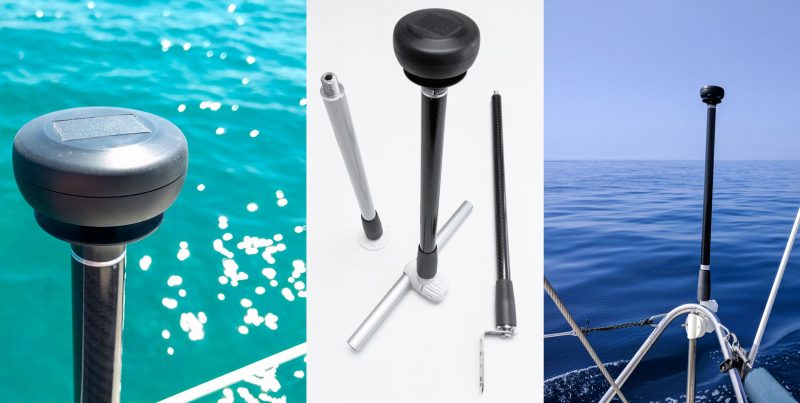
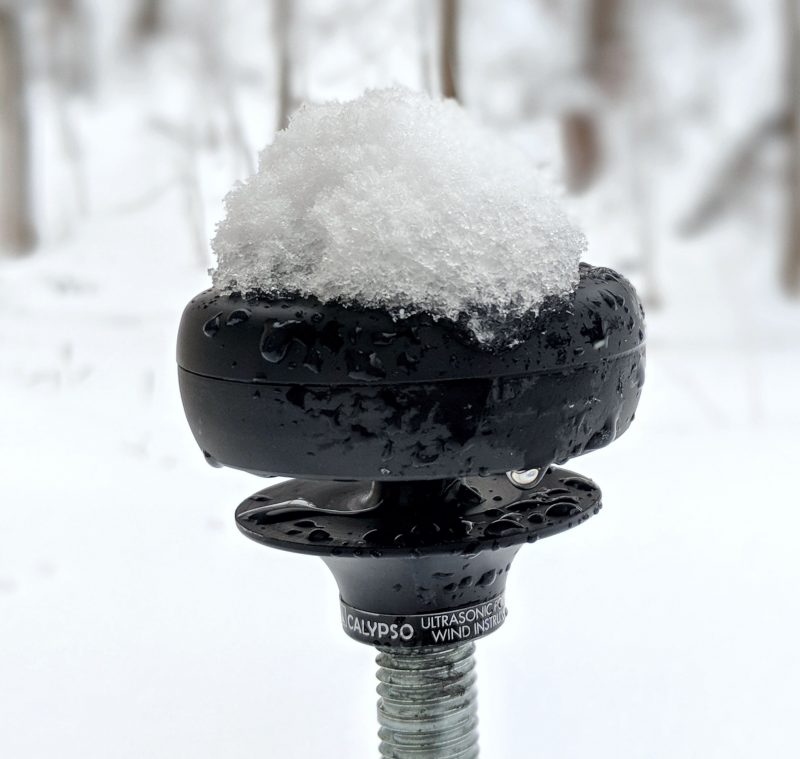
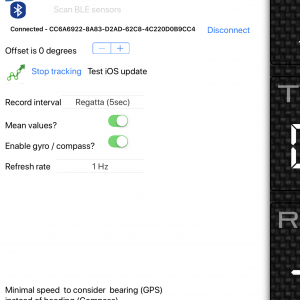
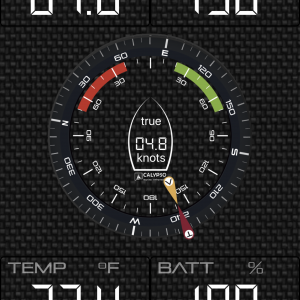
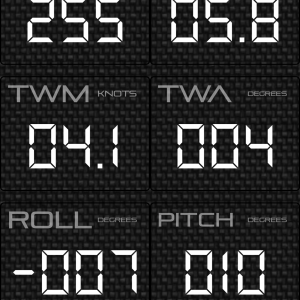
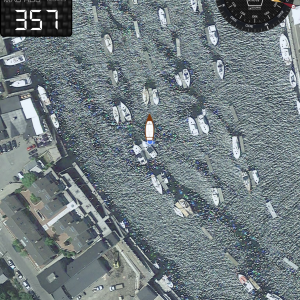
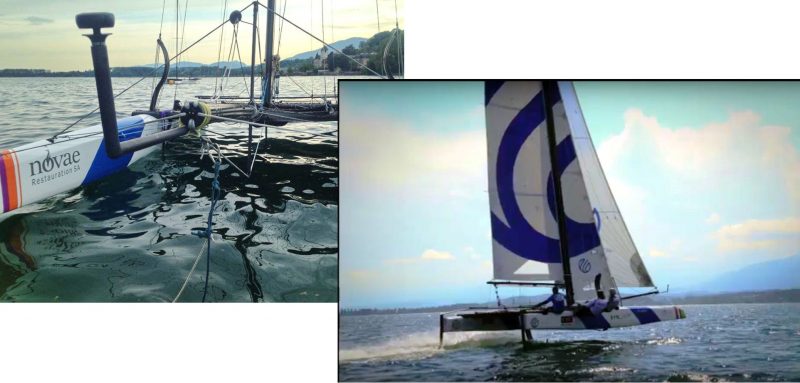












The IBEX Innovation Awards are out…
https://boatingindustry.com/news/2018/10/02/ibex-announces-winners-of-2018-innovation-awards/
…and I know that Ben Stein is pumped up about several of them.
I got a peek at Raymarine’s Axiom ClearCruise Augmented Reality myself at the NMEA Conference last week, thought it looked potentially high value, and look forward to Ray getting some details and videos out soon.
Looks interesting, but how would a sailboat use these instead of a regular masthead anemometer? The wired version has a 1.5m cable, so isn’t going to go down a mast. The other isn’t going to play nice with any current chartplotters, or displays. Shame as it might make a nice alternative to the Maretron WSO-100
Hi Mike, I agree that it would be better if the Calypso Ultrasonic Wired came with a long power and NMEA 0183 wire like the LCJ Capteurs does, but it shouldn’t be too hard to splice on a longer wire and it should work fine with current displays either using 0183 or a gateway to 2000. The Maretron WSO100 is a great sensor, but running a NMEA 2000 cable up a tall mast has possible drawbacks. It’s not just that the cable and connectors are a bit awkward; it also means that entire N2K network backbone has to go up the mast and have a terminator there.
That’s not how it works with NMEA2000 wind sensors in my experience. The sensors themselves take the place of the resistor at the end of a network, so no additional backbone cable is needed.
I’m not sure where else on a sailbot (i appreciate a motorboat or trawler my well be different), where it could be in constant clean air.
Interestingly, what does the wifi allow the the sensor to be hooked up to other than the app. Does it output 0183 sentences over wifi, or maybe signal K? Either of those would allow it to be used with a Pi running OpenPlotter or similar.
I think if they made an NMEA2000 version I’d buy it in a heartbeat to replace my Raymarine wireless system. What a pain in the backside that is.
Right, Mike, some N2K wind sensors from Airmar, Navico, and others had the termination resistor built in, but the NMEA frowns on the practice and it’s not much available anymore. Besides, my point is that running your NMEA 2000 backbone all the way the mast doesn’t make much sense. Usually there’s nothing else up there on the network and you’ve created a point of failure that’s hard to reach and can take down your whole sensor network.
So there’s a lot to be said for using another protocol — either wireless or with thin cable — to get down the mast, and then use a gateway so that it joins your N2K system only as a node, not the end of your critical backbone. I’ve been using the LCJ Capteurs that way for a year with no problems at all, and I think the Calypso Wired can work the same way:
https://panbo.com/smorgasboat-2-more-tasty-test-electronics-southbound-on-gizmo/#LCJ-Capteurs-CV7
For those using Signal K on-board; there’s a node.js server plugin available that’ll allow you to use an Ultrasonic Wireless on a Raspberry Pi 3 (model with Bluetooth) or Raspberry Pi Zero W without issues: https://github.com/decipherindustries/signalk-calypso-ultrasonic
Mike,
The wired versions are usually served with a longer wire too. Just let us know the lenght you need. However we do appreciate your comment and will add this info on our website. Tx. Fernando
I’d be really interested in such a thing to replace the bird-attractor RayMarine “whirlygig” that we have now (which is showing it’s age with some glitches) – but this one isn’t ready for that duty yet, IMHO. FWIW, I like the Bluetooth link – one less thing to get blasted if mother nature comes a-calling! In my opinion, running your data cable to the masthead is asking for trouble.
Can I get the signal to OpenCPN
The wired (NMEA0183) versions definitely, with the wireless version you’d need to run a Signal K server in between (https://github.com/signalk/signalk-server-node)
How high over the masttop would you place a calypso ultrasonic anemometer
Hi Jorgen. I think that any wind sensor will give its best performance in clean air. So ideally the install spot has no obstructions in its horizontal plane and is also out of possible updrafts from sails. That’s why many racing anemometers are mounted high and forward of the masthead.
Hi, i do use Openplotter for navigation on my 41 Trintella IV. Mast ist about 13,5 meter above the deck. How do I integrate the ultrasonic portable in to OpenPlotter directly.
Regrds
Ferdinand
I just ordered (and received) the wired version from OnNav in Indiana, and I specified a 20-meter cable. It took about a week to get it from Spain to the distributor, and I had it a few days later. Can’t wait to mount it to replace my Airmar PB200